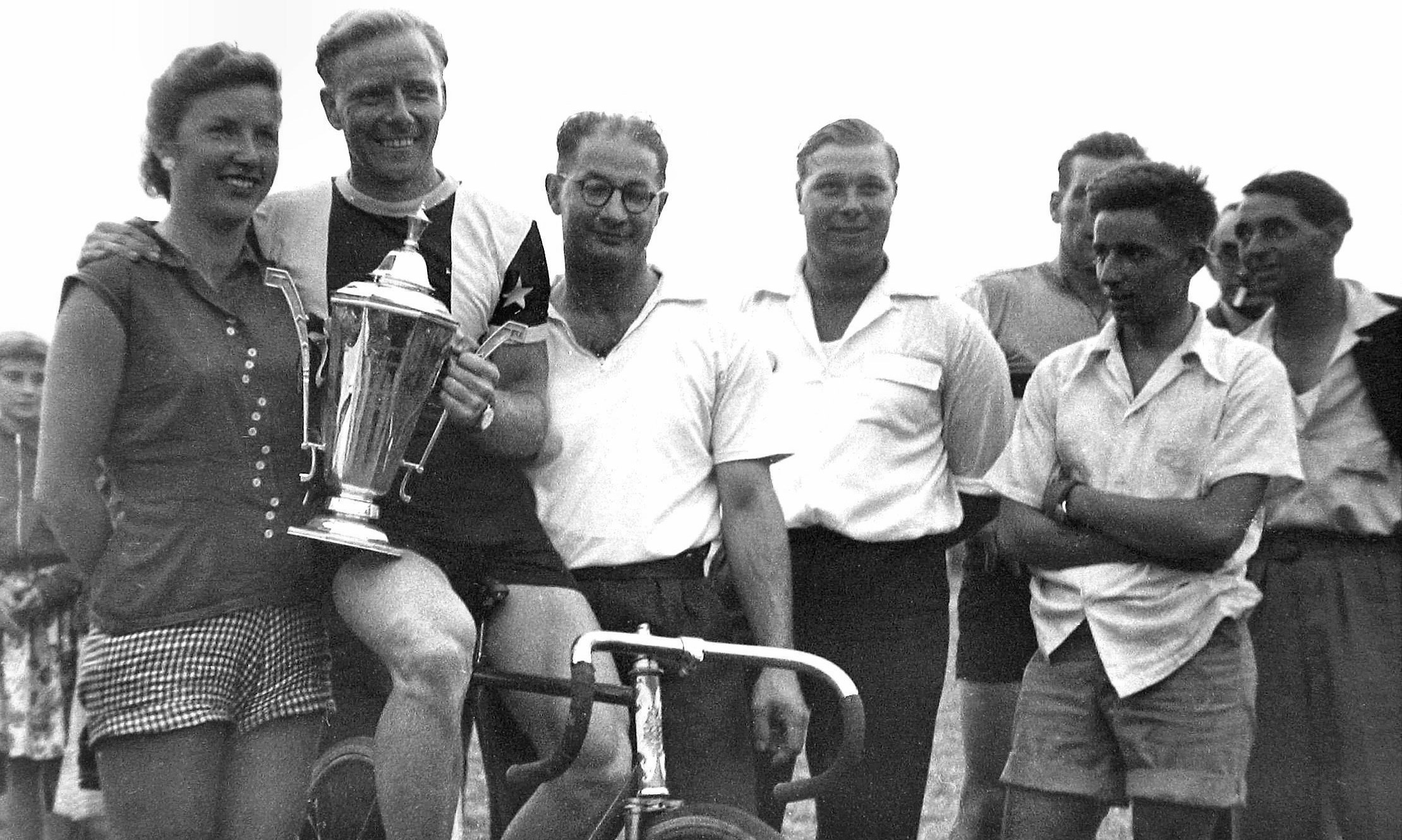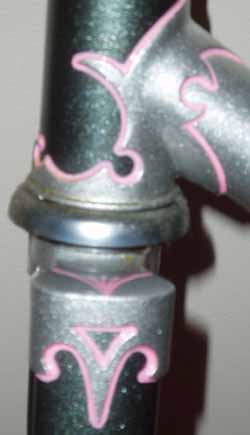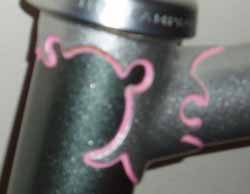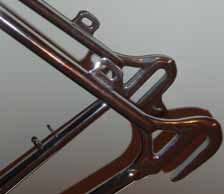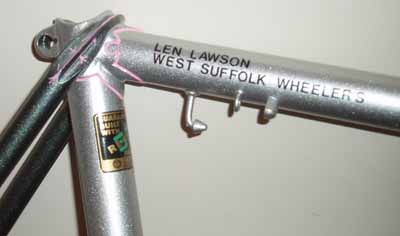Me and my Carpenter
Posted: Friday 21st August 2020
I joined our local cycling club, the West Suffolk Wheelers, based in Bury St Edmunds, Suffolk in about 1960, at the age of 16 or 17. At first I rode an Elswick Hopper, a complete bike with dropped bars which I’d bought when I left school to use to get backwards and forwards to work. However, it soon became clear that I needed something better, so when I heard that a lad in the club who’d faded away somewhat from club life, was selling his lightweight bike I went over to have a look. He fetched it out from the back of his shed, and I found it was a really nice bike, complete, with the name “Hill Special” on the frame, for which he wanted £20. It was just what I wanted. We shook hands on the deal and I dashed home to get my money. When I returned and paid him my £20, he gave me a ten-shilling note as change for, whilst I’d been gone, he’d pumped up the tyres and found that there was a puncture in the front tyre. I didn’t mind that as it could soon be mended and I was now the proud owner of a good lightweight bike. I rode that bike for about a year or so but there was a slight problem – at 23½” the frame was a tad too small for me. I needed something a bit bigger to suit my 6ft height.
But, the question was, what frame should I get? I had a think about what frames other club members were riding. There were the usual smattering of Holdsworths, Claud Butlers, Freddie Grubbs, Ephgraves, and other popular makes. There were one or two others as well – one member had a Rotrax, another a Jack Taylor, and there was even a Johnny Kay track iron. But I wanted to be a little different, I wanted something no-one else had got. I thought about a Rory O’Brien but soon gave up on that idea. Go anywhere south of Colchester and there were Rory O’Brien’s by the score as you were then not far from his shop which was located in (I believe) Romford.
So I had a look in ‘the Comic’, as ‘Cycling and Mopeds’ was disparagingly known amongst club folk (perhaps rightly so at that time). There I spotted an advertisement for Carpenter Cycles of 52 Surbiton Road, Kingston upon Thames. I sent off for the catalogue, liked what I saw, placed my order, and then waited patiently for my new frame to arrive. I can’t remember now exactly what model of frame I ordered, but I do recall that it cost me the princely sum of £25 or so, equivalent to about four week’s wages at that time, before deductions. I suspect that it was a top-of-the-range model, for it was made with Nervex Professional lugs and Reynolds 531 double-butted tubing to all tubes forks and stays, with Campag fork-ends front and rear. I specced half-chromed forks and stays, and braze-ons for handlebar gear controls at front and rear, and bare cable brake controls.

I also asked for the bottom bracket to be fitted with a Stronglight cotterless axle, using the longer 32RN version for a double chainring, even though I planned to ride fixed wheel for most of the time. It would make changing from fixed to a 10-speed setup so much easier. I also asked for fishplates to be added to the back of the forks and seatstays to secure mudguards stays in place of the normal tapped holes in the fork ends. I had gone off these, as one of these holes in the Hill Special has stripped its thread, meaning a backnut was needed to secure the screw retaining the mudguard stays. This made fitting or removing mudguards a right pain. You can imagine my excitement when I arrived home from work one day and found this large cardboard box sitting in the hallway with my name on it. I gobbled down my tea and then opened the box, drew out the frame, and excitedly unwound the brown crepe paper tape which had been wrapped around it.
I could hardly believe the sight that greeted my eyes. My new frame was finished in white, with a contrasting head tube, some coloured bands down the seat tube, and the Carpenter name in large capital letters stretching along each side of the down tube. The headset had been fitted, also the Stronglight bottom bracket axle I’d requested. And stamped on the underside of the bracket shell, I found the serial number – 5441. The pencil-thin seat stays, finishing at the seat lug in a wrap-over seat cluster, were a dream.
My new frame was beautiful. I fell in love with it straight away. I quickly built up the frame using most of the components from the Hill Special and proudly paraded out on my new machine on the next clubrun. I was so pleased at how It turned quite a few eyes and provoked considerable comment, all favourable. I can recall that a few weeks later, a young lad in the club came round to see me about some cycling matter, and his father was with him. His dad had been a member of the West Suffolk Wheelers in years gone by and he used to work in a cycle shop. He may even have built the odd frame or two himself – I’m not really sure now. I know that he spent a good minute or two taking a close look at my new Carpenter, paying particular attention to the brazing around the lugs etc, and, whilst I can’t remember his exact words, he said something to the effect of “They’ve built a fine frame for you, Len. Be sure to take care of it.”
He was right. It was a nice, pleasant bike to ride and to use. I had a Brooks B17 saddle, and together with the Carpenter’s long 41½” wheelbase it made for a really comfortable ride every time I went out on it, which was very often indeed. I sold on the Hill Special frame (now also regarded as a classic) to another club member, and he may well have it still. I rode my Carpenter for the next few years, at first mainly on fixed wheel, then later sticking to fixed for the winter and then changing to gears for the summer. My riding encompassed solo outings just for the joy of it, club runs, long-distance touring holidays on the bike with a friend, with overnight accommodation staying at Youth Hotels as well as time trial racing.
But eventually, as so often happens, the attraction of Delectable Girls started to outweigh those of Derailleur Gears and the Carpenter became resigned to languishing in the garage as I got married and started to raise a family. As our children grew into their teenage years, I found I had more time to spare, so the Carpenter was dragged out of the garage and sent for a respray, and I commenced riding again, but only as a leisure pursuit when time permitted and not as a serious club rider. Mainly outings on a Saturday afternoon with a friend, or a short trip on a warm weekday evening.
But then one Saturday afternoon, disaster loomed. I was working up a hill when there was an almighty ‘crack’ and the pedals developed a wobble beneath my feet. Fortunately I was only a mile or so from home, so I limped home and checked out what had gone wrong. I found that the left-hand bracket cup had jumped out of the bracket shell by a threads-width. So I refitted and readjusted the bearing cup and off I went again but it was only a few days later that the same thing happened again. And then again a little later on so I stripped out the bracket bearings once again. A careful examination of the threads inside the bracket shell showed that the threads had become worn down, and the teeth were now of insufficient depth to satisfactorily retain the bearing cup.
I asked around, but found that short of dismantling the frame and fitting a new bracket shell, a task which few frame builders seemed prepared to undertake to a frame of that age, there seemed to be nothing that could be done. The heart of my pride and joy had given out. My beautiful Carpenter, which had given me almost 40 years of faithful service, was broken.
I was left devastated and upset. But I still wanted to continue with my cycling, so I cast around and purchased a new frame from Dave Yates, who is now located at Coningsby, near Lincoln. He built me a nice frame, which I’ve used for some years now. But it was whilst talking to him on the phone one day shortly after I’d started riding it about some minor query, that I happened to mention the problem that had crippled my Carpenter. He very kindly suggested that I send the frame to him, and he would have a look at it and see what he thought he might be able to do. So that’s what I did, and a few days later, he phoned me and said he would be able to repair it. He would fill up the weakened threads with weld, and then drill out the bracket shell and re-tap the thread in it. So that’s what I asked him to do. I chose a colour scheme of dark grey and silver, with lugs etc lined out in pink (it seemed a good idea at the time).
I also asked him to re-chrome the forks and stays, and replicate the ‘Carpenter’ lettering on the downtube as best he could. Have a look at the photos to see what a good job he made of it. Fortunately, in both of the two resprays it’s had, the distinctive Carpenter head badge has been retained and refitted. I’ve never built up the Carpenter again. My riding these days consists mainly of getting out on the mountain bike (I’ve got two) whenever I can, riding off-road down the farm tracks and public rights of way, or round our local National Trust parkland. But the Carpenter still takes pride of place in my home office, and in my heart. I never kept a mileage chart, but I reckon it’s carried me around 40,000 miles. And of course, all under my own steam. I fell in love with it the first day I saw it. I love it still. And I always will. And now, here are the action photos.
Here I am riding fixed. I was for a very long time an aficionado of a fixed wheel, the rhythm it afforded seeming to suit my style. I normally rode an 81” fixed at the start of the season, moving up a tad to an 84” gear after the first 4-6 weeks or so. Note the tub rolled up behind the saddle. You can just make out the clip on the handle-bars for a Smiths Empire watch. This wasn’t very satisfactory as the watch would jump out and be lost if you went over a large bump in the road. After buying about 3 watches in as many weeks I gave up on them. I don’t know what event this was – it may well have been the 1964 Crest C.C. m/m 50-mile time trial on the 32nd course north of Bishops Stortford, which I won (blush) and also took 3rd handicap (another blush). I won the grand total of £3. Those were the days! But it’s more likely to have been taken at the National Championship 100 mile time trial held the same year on the N7 course on the A1 near Peterborough. For a short while I was first on the road in this event – then No. 10 came past me, followed shortly after by No. 5, then No. 20, and so on. They’d put me down to start off at No.1, the first rider on the road !
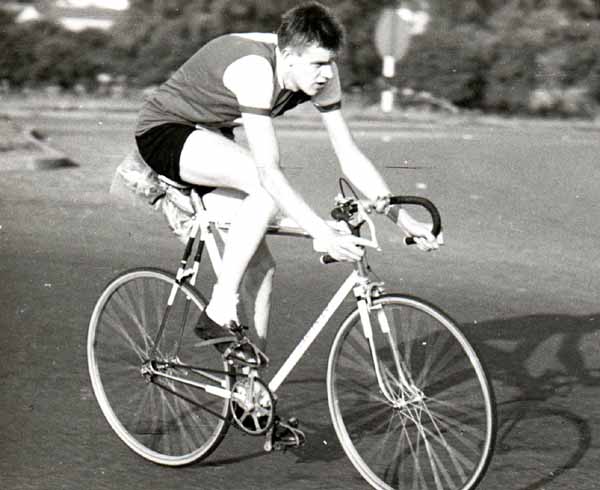
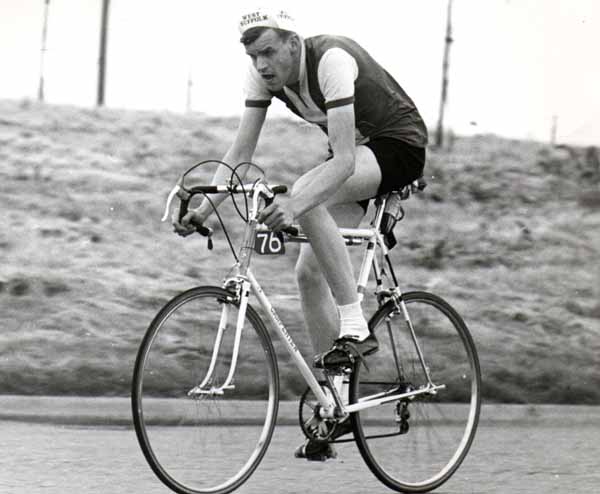
This shot shows the Carpenter fitted up with gears, a rather unusual setup for me in that when I rode gears, I normally used a 10-gear drive with a double chainring at the front, rather than the five gears we see here. Note the Campag handlebar gear control – I could never see the sense in having to drop your hand to the downtube every time you needed to change gear when you could have the gear control close and convenient to your normal hand position. Look carefully at the lower part of the seatstays and you can just make out the fish-plates for fixing mudguard stays – remember this was a ‘one bike fits all uses’ machine.
I used special bolts with rectangular rather than circular heads, offered into the fishplates from the wheel side, with small wingnuts and spring washers on the other end, to secure the mudguard stays. And look at the unusual location of the rear brake, in front of the seatstays. This all helped to make the removal or fitting of mudguards so much easier – just remove the brake’s securing nut, loosen off the wingnuts, twist the back bolt by a quarter-turn, and hey presto, you could slip the mudguards off in a jiffy. Also, having the brake in front of the seatstays helped to keep the bare brake cable, which ran from a small metal end stop fitted to the seat bolt to the straddle-wire of the Mafac centre-pull brake, away from the saddlebag which I often used when club riding or touring. I used a Carradice Camper saddlebag, the biggest you could get, and it was ideal for a fortnight’s youth hostelling etc. You can see in the picture, on the back of the seat stays, the black cloth handlebar tape which I fixed to the frame to stop a metal bag support which clamped to the frame, from damaging the paint finish of the frame.
I’ve still got the cap and the jersey I’m wearing here, still tucked away in the back of my cupboard somewhere (how sad is that after 40 years or so? ) but I’m about to pass on the jersey to my 10-year-old grandson – for some strange reason, it doesn’t fit me any more.
And finally, some up-to-date pics in the new livery. Head badge at top of page, head lug, fork crown, Rear Ends and wrap-over seat cluster
Acknowledgements: The two action photos are by Len Thorpe, If anyone can help me identify the events where they were taken from the numbers on the back (80/115 (fixed) and 69/69(gears) I would greatly appreciate it.
Posted: Friday 21st August 2020
Contents
This article appears in the following categories.
Upcoming Events
Whether you are looking for a gentle social meet up, or a 100-mile ride browse the community’s upcoming events and plan your next weekend outing.
